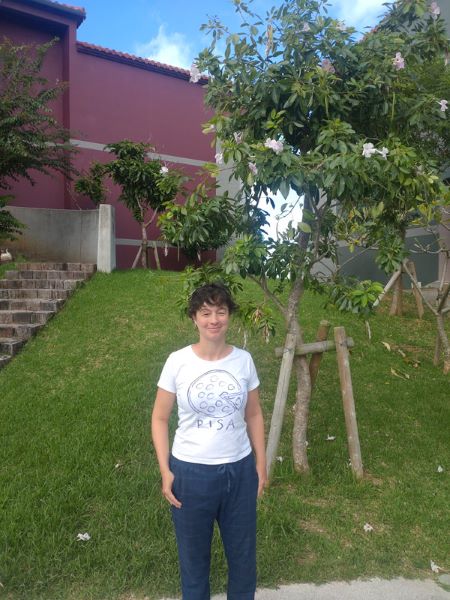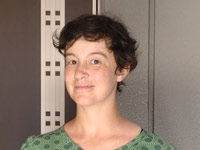Dec. 20, 2024
Scientific computing: a world of possibility
Theresa Pollinger, Postdoctoral Researcher
Please describe your role.
I am a postdoctoral researcher in the Supercomputing Performance Research Team at the RIKEN Center for Computational Science (R-CCS). I work in the vibrant space between simulations, high-performance computing hardware, communication networks, algorithms, numerical models, predictions, software and the whole stack of concepts they are built upon. It’s typically called computational engineering, computational science or scientific computing. I am a fully remote researcher and live and work on the Japanese island of Okinawa with occasional on-site visits to the team in Kobe.
How did you become interested in your field?
There is something special about my field that keeps me sticking around—it has an amazing research culture. People are not very status driven, are typically quite geeky and very happy to discuss even seemingly trivial questions. And even though I am on Okinawa, I feel involved with R-CCS. If I want to discuss a topic, I can usually get in touch with any world-class scientists within my institute for insightful discussions. They are not only very knowledgeable, but also very nice people.

What has been the most interesting discovery in your field recently?
The ongoing AI boom is a big topic. It touches all the things I work with: software ecosystems, numerical algorithms and hardware. AI hardware is especially interesting, because the increased diversity in computing architecture means there is a lot of experimentation—and a wealth of computing hardware choices that were just not available a few years ago. On the downside, right now it’s very hard to write programs that will achieve high performance on all these different machines. For me, this provides an excellent excuse to keep learning about different emerging programing models.
My research is important for society because…
I develop the building blocks that help combine insights from different fields to enable new discoveries. I try to find the right abstractions so that other scientists don’t have to understand every detail and can instead just try a range of efficient potential methods in their research.
What technologies do you use?
Supercomputer Fugaku is the most intentionally designed supercomputer in the world. It is still leading the HPCG benchmark—a measure of computing speed in terms of running applications—more than four years after it was installed. That’s incredible considering how fast everything else moves in our field!
How do you balance family life?
I am glad that I can be a fully remote researcher. This allows for my partner to do research on-site at Okinawa Institute of Science and Technology, and for our child to attend their well-established kindergarten. I typically start my working day early and pick up our child from kindergarten in the afternoon. On weekends, we often go swimming at the nearby beaches.
Rate this article

